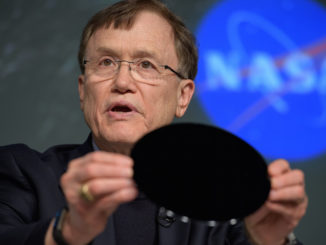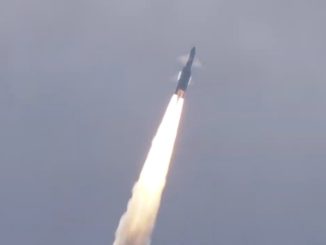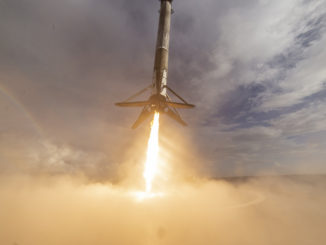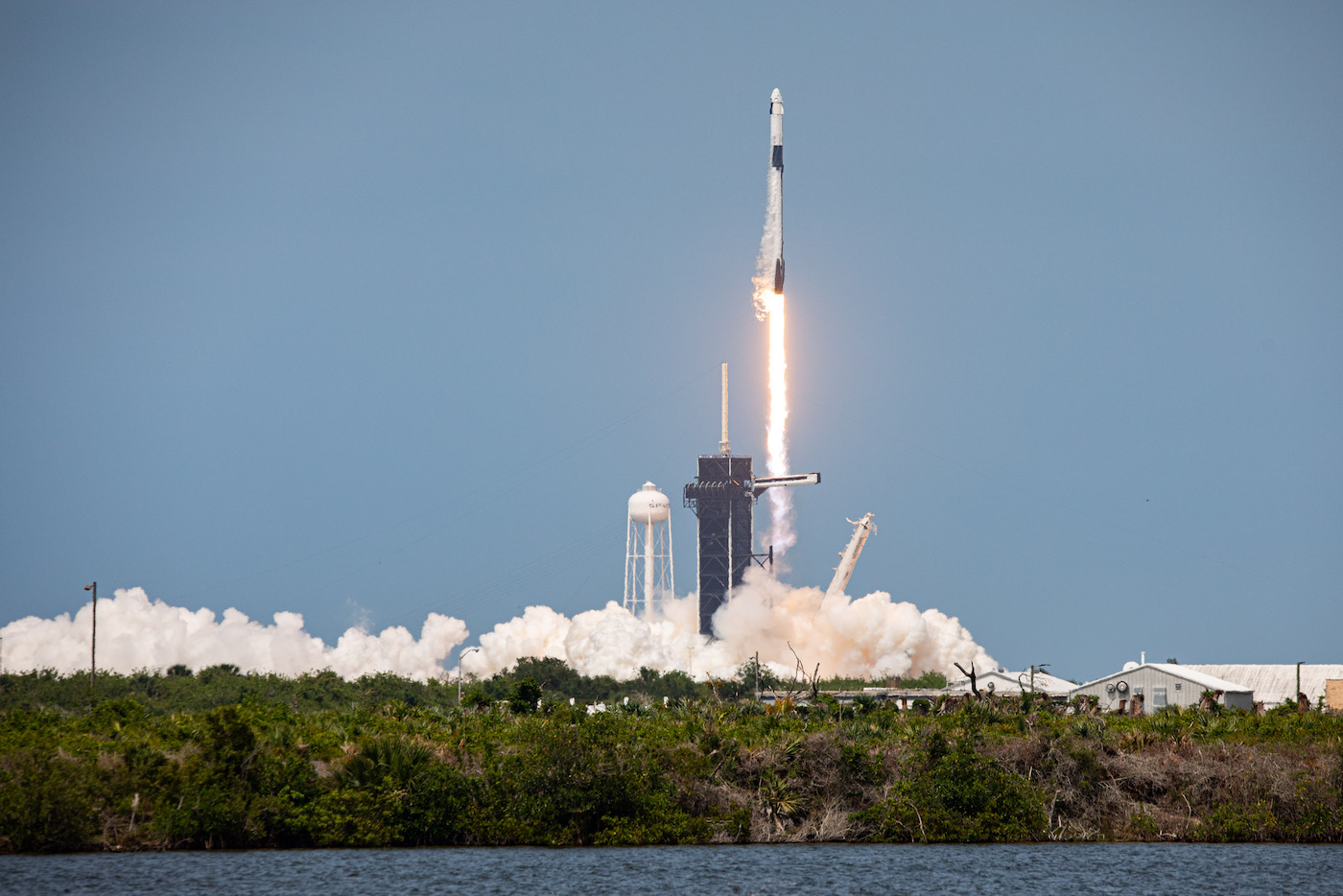
Two veteran NASA astronauts rocketed away from the Kennedy Space Center in Florida on Saturday to begin a test flight of a new commercial spaceship designed, built and owned by SpaceX.
The long-awaited return of human spaceflight to the Florida spaceport marked just the fifth time in U.S. history that astronauts flew into orbit on a new type of spacecraft, and the first time since the inaugural space shuttle launch in 1981.
With spacecraft commander Doug Hurley in the left seat and veteran astronaut Bob Behnken to his right, SpaceX’s Crew Dragon spacecraft lifted off from pad 39A at the Kennedy Space Center at 3:22:45 p.m. EDT (1922:45 GMT) Saturday.
Nine minutes later, the astronauts were in orbit, ending a nearly decade-long gap in U.S. human spaceflight capability that forced NASA to pay the Russian space agency for rides to the space station on Soyuz spaceships.
A previous launch attempt Wednesday was canceled due to the threat of lightning, and stormy weather again threatened Saturday’s countdown.
But a wave of showers and thunderstorms pushed through the spaceport and skies cleared sufficiently to allow the 215-foot-tall (65-meter) Falcon 9 rocket and Crew Dragon capsule to take off at Saturday’s instantaneous launch opportunity, a one-second window determined by the location of the space station’s orbital track.
Watch a replay of liftoff! pic.twitter.com/yv1Sw7I80z
— Spaceflight Now (@SpaceflightNow) May 30, 2020
Hurley and Behnken put on their white SpaceX-made pressure suits at NASA’s crew quarters Saturday, then rode a Tesla Model X car to pad 39A a few miles away. Once the astronauts arrived at the historic seaside launch complex — the departure point for all of NASA’s Apollo moon landing missions, and the first and last space shuttle flights — they rode an elevator up the tower and walked across a 50-foot (15-meter) access warm to board the Crew Dragon capsule.
A half-dozen SpaceX engineers wearing dark jumpsuits and masks helped Hurley and Behnken into their seats, then closed the Dragon’s hatch and evacuated the launch pad before the Falcon 9 was fueled for liftoff.
Nine Merlin 1D main engines powered the Falcon 9 northeast from the Kennedy Space Center with 1.7 million pounds of thrust, then a single Merlin upper stage engine tuned to fire in the vacuum of space propelled the Crew Dragon spacecraft into orbit.
Soon after the upper stage engine shut down, the Crew Dragon separated from the Falcon 9. Cameras mounted outside the rocket and inside the Dragon spacecraft beamed down live views throughout the climb into orbit, including video from inside the cockpit.
The spectacular imagery showed Hurley and Behnken in their flight suits as they soared into space. At eye-level, a three-panel touchscreen graphic display let the astronauts know where they were during ascent.
Watch the Crew Dragon with astronauts Doug Hurley and Bob Behnken aboard separate from the Falcon 9 upper stage. Follow our live coverage: https://t.co/1DF5tRjUzj pic.twitter.com/HzddQvw6oh
— Spaceflight Now (@SpaceflightNow) May 30, 2020
Thousands of spectators lined roadways in nearby communities to watch the launch. The crowds allowed on NASA property were significantly smaller, with limitations on the number of media representatives and VIPs present to see the historic crew launch.
President Donald Trump and Vice President Mike Pence attended the launch, and Trump gave remarks inside NASA’s Vehicle Assembly Building later Saturday.
The successful launch Saturday was a milestone for NASA, with the restoration of crew access to low Earth orbit from U.S. soil. The nine-year gap since the last shuttle mission in 2011 was the longest span of time since the first U.S. human spaceflight in 1961 that NASA did not have a way to send crews into space on domestic rockets.
Hurley, a retired Marine Corps colonel who hails from Upstate New York, is the spacecraft commander on the Crew Dragon test flight, designated Demo-2, or DM-2. His responsibilities include launch, landing and recovery operations.
Behnken is the joint operations commander for the Demo-2 test flight. The 49-year-old Missouri native will be responsible for activities once aboard the International Space Station.
“Enjoy your new spaceship,” radioed Jason Aranha, a spacecraft communicator at SpaceX’s mission control in Hawthorne, California.
“We are definitely doing that,” replied Hurley a couple of hours after launch. “It’s been a spectacular spaceship so far. Congrats to the Dragon teams, and obviously everybody there in Hawthorne that’s done all this work to get us up here.
“It was quite a ride,” Hurley said. “Everybody go home and kind of remember this moment. It’s been pretty incredible.”
Hear Dragon commander Doug Hurley’s message to the SpaceX mission control team in Hawthorne, California.
“It’s been a spectacular spaceship so far,” Hurley says.
LIVE COVERAGE: https://t.co/1DF5tRjUzj pic.twitter.com/UPn5kX9Geb
— Spaceflight Now (@SpaceflightNow) May 30, 2020
Hurley later completed a manual flight test to demonstrate the crew’s ability to command manual inputs to the Crew Dragon’s flight control system. The spacecraft is designed to operate autonomously, and is scheduled to use the autopilot mode for docking with the space station at 10:29 a.m. EDT (1429 GMT) Sunday.
The astronauts also downlinked live video from inside the spacecraft before beginning an eight-hour sleep.
Hurley and Behnken announced they are naming the capsule “Endeavour” after the retired NASA space shuttle. The spacecraft is the third crew vehicle in the U.S. space program to be named Endeavour, after the Apollo 15 command module and shuttle orbiter.
“Without further ado, we would like to welcome you aboard capsule Endeavour,” Hurley said. “We chose Endeavour for a few reasons — one because of this incredible endeavor NASA, SpaceX and the United States have been on since the end of the shuttle program back in 2011.
“The other reason we named it Endeavour is a little more personal to Bob and I,” Hurley continued. “We both had our first flights on shuttle Endeavour, and it just meant so much for us to carry on that name.”
But this Endeavour is different than the past space vehicles that carried the name. Instead of being a government-owned spaceship, the Crew Dragon is owned by SpaceX. And it’s controlled by SpaceX engineers in Southern California, not by NASA controllers and contractors in Houston.
The change is a significant step toward the commercialization of spaceflight, a strategic objective of NASA, which says the change will bring about lower costs and more innovation in the space transportation industry.
NASA is looking to incorporate commercial elements in its architecture to return humans to the lunar surface. The agency last month announced SpaceX and two other companies won contracts to advance development of human-rated lunar lander vehicles.
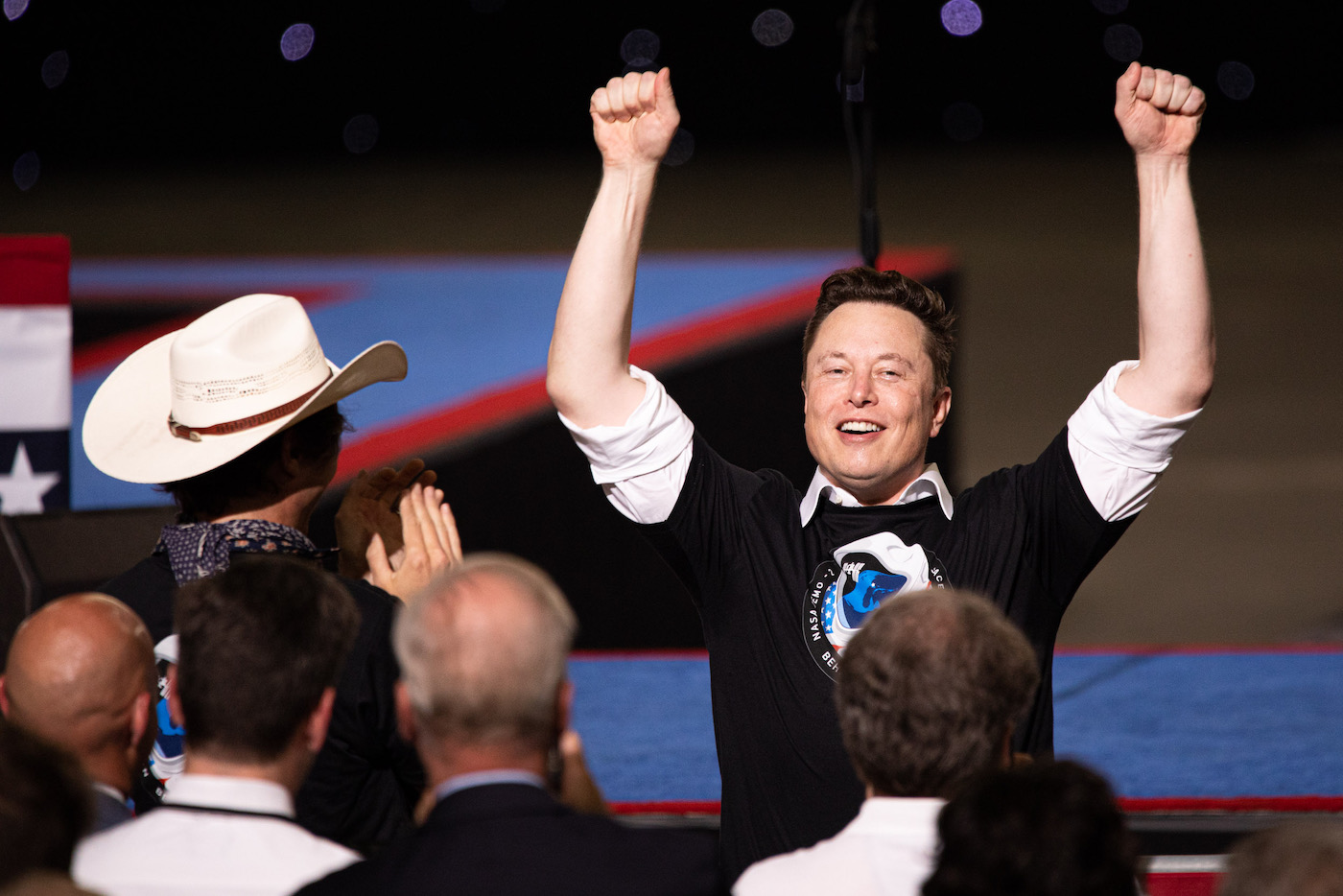
The launch of SpaceX’s Crew Dragon spacecraft Saturday was a turning point for SpaceX, the once-upstart space company founded in 2002 by billionaire Elon Musk. It comes after years of development, including delays caused by funding shortfalls in congressional budgets and technical setbacks, including a pair of issues in the last year involving the crew capsule’s launch abort system and parachutes.
Musk said he was “quite overcome with emotion” after the Dragon launch Saturday.
“It’s been 18 years working toward this goal, so it’s hard to believe that it’s happening,” Musk said. “We haven’t quite yet docked safely with the space station, and of course, we need to bring them back safely, and we need to repeat these missions and have this be a regular occurrence. So there’s a lot of work to do.”
Nevertheless, Musk and NASA officials were in celebratory mood after Saturday’s launch.
“It’s been nine years since we’ve launched American astronauts on American rockets from American soil, and now we have done it again,” said NASA Administrator Jim Bridenstine.
The Demo-2 astronauts will live and work on the International Space Station for one-to-four months before coming back to Earth for a parachute-assisted splashdown in the Atlantic Ocean just east of Cape Canaveral. The final duration of their test flight will be primarily determined by the performance of the capsule’s solar arrays in orbit, mission managers said earlier this month.
Hurley and Behnken were two of four NASA astronauts selected in 2015 to train for commercial crew missions on SpaceX and Boeing capsules. NASA assigned the two-man crew to the SpaceX Demo-2 mission in 2018.
NASA has signed a series of funding agreements with SpaceX since 2011 valued at more than $3.1 billion. With NASA funding and technical oversight, SpaceX has developed the human-rated Crew Dragon spacecraft to launch on the company’s Falcon 9 rocket.
Boeing has received a similar series of contracts from NASA — valued at more than $4.8 billion — to develop the Starliner crew capsule.
But those figures include NASA payments to the contractors to cover crew transportation services, once the Crew Dragon and Starliner vehicles are operational. Phil McAlister, NASA’s head of commercial spaceflight development, said May 13 that the space agency invested around $5 billion toward Crew Dragon and Starliner design and development.
The companies also put in an unspecified level of private funding, a requirement under the public-private partnership arrangement pursued by NASA’s commercial crew program since 2010.
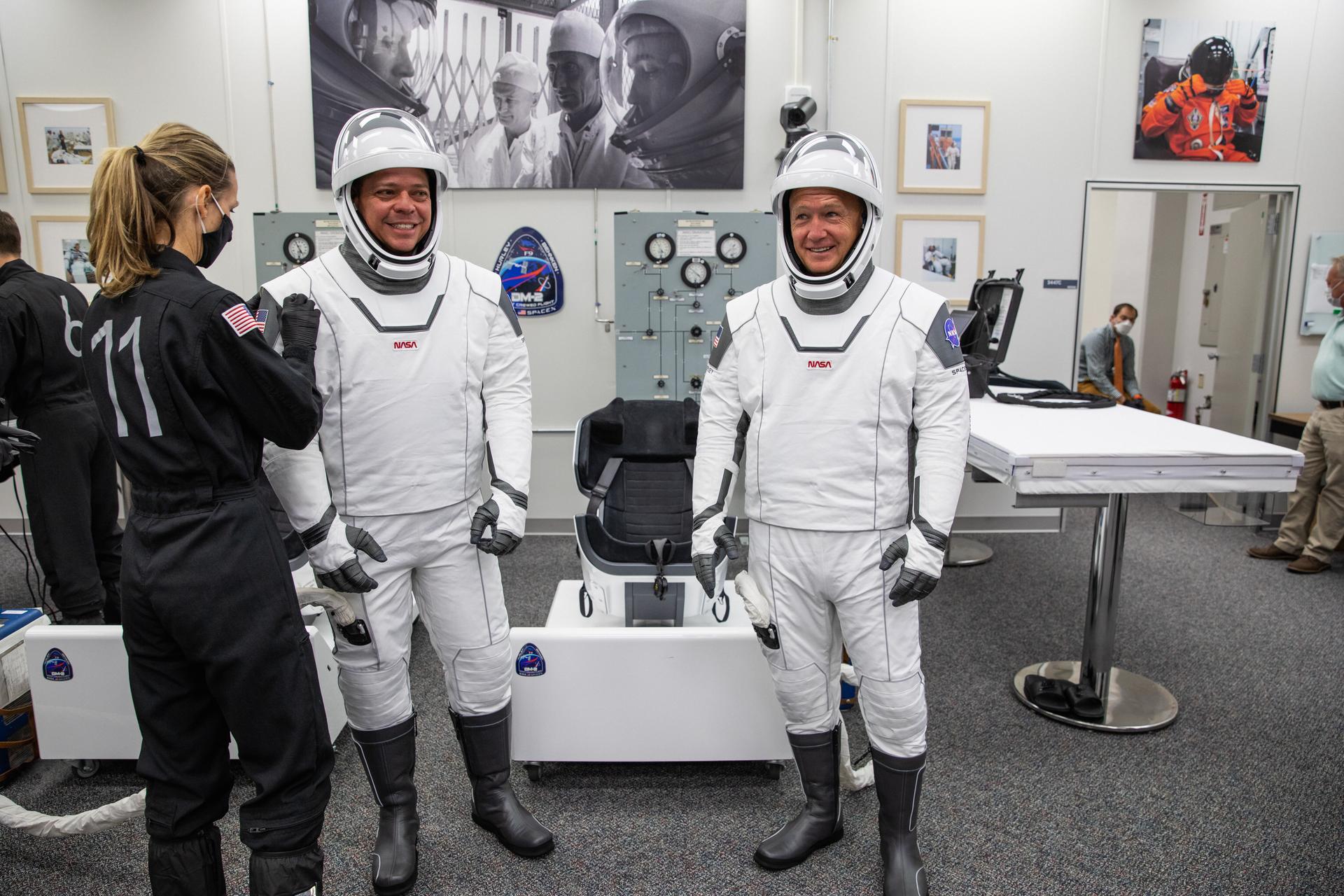
With Saturday’s launch, SpaceX became the first private company to put people into orbit. The achievement follows SpaceX’s earlier milestones, such becoming the first private company to deliver cargo to the space station in 2012.
SpaceX has also carved out a leading place in the global commercial launch industry, and is a trusted contractor to launch satellites for the U.S. military.
But SpaceX’s long-term vision — as laid out by Musk — is interplanetary space travel. And launching people into space is a core mission for the company.
NASA and SpaceX received numerous congratulatory messages, including from Sergei Krikalev, a veteran cosmonaut who now needs human spaceflight programs at the Russian space agency.
NASA has paid the Russian government approximately $3.9 billion since 2006 to purchase Soyuz seats for astronauts from the United States and the station’s other international partners, according to a report last year by NASA’s inspector general.
Most recently, NASA agreed to pay the Russian government $90.2 million for a single Soyuz seat on a launch this October. The U.S. space agency decided to sign the agreement to guarantee access to the space station for a NASA crew member in the event of additional delays in the new U.S. crew capsules.
Assuming Hurley and Behnken’s test flight goes according to plan, the first operational Crew Dragon launch is scheduled from the Kennedy Space Center no earlier than Aug. 30 with a four-person space station crew.
Boeing’s Starliner spaceship — facing delays after a problem-plagued unpiloted test flight last December — will have to perform a second automated demonstration mission before it is cleared to fly astronauts. The Starliner’s crewed test flight to the space station is now expected in the first half of 2021.
A report by the NASA inspector general last year concluded the space agency is paying roughly $55 million per round-trip seat on Crew Dragon missions, and $90 million for a Starliner ticket to the space station. Both capsules will typically carry four astronauts on missions to the International Space Stations.
NASA expects to end payments to Russia once the new U.S. crew ships are operational. Under the space agencies’ current plans, U.S. astronauts will continue flying on Soyuz spacecraft and Russian cosmonauts will launch and land on the new U.S. vehicles under a barter arrangement, with no funds exchanged.
But Russian officials say they are not assigning cosmonauts to missions on U.S. vehicles until they are flight-proven.
Russia’s partnership with NASA on the International Space Station program on a technical level has been an unqualified success. Without Russian spacecraft, U.S. astronauts could have not flown to and from the station in the wake of the space shuttle Columbia accident in 2003, or since the shuttle’s retirement in 2011.
But the political relationship has been tortured at times.
One low point came in 2014, when Russia annexed Crimea. That prompted the Obama administration to levy U.S. sanctions on Russian government entities, and some individuals, including then-Russian deputy prime minister Dmitry Rogozin, who is now the head of Roscosmos, the Russian space agency.
In response to the sanctions, Rogozin suggested on Twitter in 2014 that the United States “deliver its astronauts to the ISS with a trampoline.”
“The trampoline is working,” Musk joked Saturday.
Email the author.
Follow Stephen Clark on Twitter: @StephenClark1.

